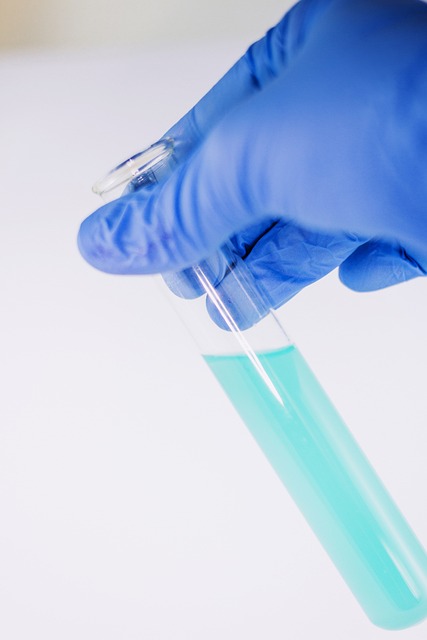In the UK, translation services for diagnostic test results are a critical component of healthcare communication, especially given the linguistic diversity within the population. These specialized translation services must go beyond basic language translation to ensure that medical terminology and idiomatic nuances are accurately conveyed. They operate under strict regulatory frameworks, including compliance with the MHRA, GDPR, and the Equality Act 2010, to maintain patient safety, data confidentiality, and legal standards. Translation service providers must be certified professionals with expertise in medical translation and a deep understanding of UK healthcare regulations. Their work is essential for ensuring that patients receive accurate information in their preferred language, thereby supporting informed decision-making and effective treatment adherence, all while upholding the highest ethical and quality standards.
Navigating the complexities of diagnostic test results within the UK’s regulatory framework is paramount for healthcare providers and patients alike. As global communication and patient mobility increase, the necessity for accurate translation services for diagnostic test results in the UK becomes ever more critical. This article delves into the intricacies of UK regulations governing diagnostic reports, emphasizing the indispensable role of professional translation services in achieving compliance. From the key elements required by law to best practices for medical document translation, we explore how maintaining clinical precision and contextual correctness can safeguard patient care. Further, we examine the legal requirements and the importance of multilingual patient communication in upholding standards of transparency and safety. Selecting a reliable translation service provider is not just a matter of choice but a compliance imperative to ensure that diagnostic test results are understood accurately across language barriers. This article serves as a guide for healthcare professionals and organisations to navigate these essential aspects effectively, ensuring that every patient receives the care they need in the language they understand best.
- Understanding UK Regulations for Diagnostic Test Results
- The Role of Professional Translation Services in Compliance
- Key Elements of Diagnostic Test Reports Required by UK Law
- Accurate Translation: Ensuring Clinical Precision and Contextual Correctness
- Legal Requirements for the Release of Diagnostic Test Results in the UK
- Navigating Language Barriers: The Importance of Multilingual Patient Communication
- Best Practices for Translating Medical Documents to Meet UK Standards
- Selecting a Reliable Translation Service Provider for Diagnostic Test Reports
Understanding UK Regulations for Diagnostic Test Results

When it comes to diagnostic test results in the United Kingdom, compliance with stringent regulations is paramount to ensure patient safety and the accuracy of medical outcomes. The UK’s regulatory framework for diagnostic tests is comprehensive and is overseen by various bodies including the Medicines and Healthcare products Regulatory Agency (MHRA) and the National Health Service (NHS). These entities set forth guidelines that dictate how diagnostic tests must be conducted, reported, and interpreted. For healthcare providers and laboratories utilising translation services for Diagnostic Test Results UK, it is essential to understand these regulations as they pertain to the accurate communication of test results across languages, particularly when dealing with a diverse patient population. The translations must convey not only the medical terminology accurately but also adhere to the legal standards set by UK law. This includes the proper classification and labeling of tests, ensuring that all results are interpreted correctly and that any necessary follow-up actions are clearly indicated for healthcare professionals and patients alike. Navigating these requirements can be complex, and failure to comply can lead to significant repercussions. Therefore, it is crucial for entities offering translation services to have a deep understanding of the UK’s diagnostic regulations and to apply this knowledge meticulously in their translations to uphold the integrity of medical data exchange within the UK healthcare system.
The Role of Professional Translation Services in Compliance

In the context of healthcare, the accuracy and clarity of diagnostic test results are paramount, especially when they cross language barriers within the diverse communities of the UK. Professional translation services play a pivotal role in ensuring that diagnostic test results are communicated effectively across different languages, maintaining compliance with stringent UK regulations. These specialized services are not mere word-for-word translators; they involve expert linguists who possess specialized knowledge in medical terminology and the nuances of language. This expertise is crucial when converting findings from one language to another, as it guarantees that the results retain their original meaning and context, which is essential for patient care and decision-making. Moreover, these services adhere to industry standards such as ISO 17100, ensuring that all translated documents, including diagnostic test results, comply with legal requirements and ethical guidelines set forth by the UK’s regulatory bodies like the Medicines and Healthcare products Regulatory Agency (MHRA). By leveraging professional translation services for Diagnostic Test Results UK, healthcare providers can confidently navigate cross-cultural communication while upholding the integrity and reliability of patient information. This commitment to precision and adherence to regulations is a cornerstone in fostering trust between patients, healthcare providers, and regulatory authorities.
Key Elements of Diagnostic Test Reports Required by UK Law

In the context of healthcare within the United Kingdom, diagnostic test results are subject to stringent regulatory standards as outlined by UK laws. These regulations ensure that all reports produced from diagnostic tests adhere to a high standard of accuracy and clarity. A key element of compliance involves the inclusion of patient information, such as name, date of birth, and the specific clinic or hospital where the test was conducted. Additionally, the report must accurately reflect the results of the test, including any measurements, reference ranges, units of measurement, and interpretations of those results by a qualified healthcare professional. This professional interpretation is crucial for patient understanding and informed decision-making.
For diagnostic test results to be legally compliant in the UK, they must also be presented in a format that is both coherent and accessible. This includes the use of clear language and, where necessary, the provision of translation services for patients who may not have proficiency in English. The reports must be legible, with all graphs and charts clearly labeled and accompanied by explanatory text. Furthermore, the reports should be structured in a way that facilitates a logical flow of information from test results to clinical interpretations. This structured approach enables healthcare providers to quickly assess the patient’s condition and make necessary referrals or treatment decisions, thereby improving the overall quality of patient care. Translation services are an integral part of this process, ensuring that language barriers do not hinder patient understanding or the effective communication of medical findings.
Accurate Translation: Ensuring Clinical Precision and Contextual Correctness

When diagnostic test results are to be communicated across linguistic barriers within the UK, the integrity and precision of those communications are paramount. The translation of such critical information demands a high level of clinical precision and contextual correctness to ensure that patients receive accurate and actionable health guidance. In this context, translation services for diagnostic test results play a pivotal role in facilitating cross-lingual healthcare delivery without compromising on medical accuracy or patient safety. These specialized services must go beyond mere word-for-word translations; they must take into account the nuances of medical terminology and idiomatic expressions that could alter the meaning of test outcomes. This is where translation services for diagnostic test results in the UK distinguish themselves, offering culturally sensitive and contextually aware translations that align with the stringent regulations set forth by bodies such as the National Health Service (NHS) and the Medicines and Healthcare products Regulatory Agency (MHRA). By leveraging professional linguists who are not only fluent in both languages but also well-versed in medical terminology, these services ensure that every translated report is a true reflection of the original, enabling healthcare providers to maintain high standards of patient care and compliance with UK regulations.
Legal Requirements for the Release of Diagnostic Test Results in the UK

In the United Kingdom, the release of diagnostic test results is governed by a comprehensive framework of regulations designed to ensure patient safety and data confidentiality. These legal requirements mandate that all diagnostic test results must be reported in a clear, accurate, and timely manner to both patients and their healthcare providers. The UK’s regulatory body, the Medicines and Healthcare products Regulatory Agency (MHRA), plays a pivotal role in overseeing the quality and compliance of diagnostic tests. Compliance with these standards is critical for any laboratory or service providing translation services for diagnostic test results in the UK. The regulations stipulate that test results must be communicated using language that patients can understand, which often necessitates the use of professional translation services to bridge linguistic barriers and ensure that the meaning and significance of the test outcomes are accurately conveyed. This is particularly important in a diverse society where a significant proportion of the population may require such services to receive healthcare information in their preferred or native language. The process of releasing results must adhere to strict data protection laws, including the General Data Protection Regulation (GDPR), which safeguards personal data and privacy. Therefore, entities offering translation services for diagnostic test results in the UK must not only be proficient in linguistic translation but also adept at navigating the complex legal landscape that governs the handling of sensitive health information. Ensuring compliance with these regulations is essential for maintaining public trust and upholding the integrity of healthcare services across the nation.
Navigating Language Barriers: The Importance of Multilingual Patient Communication

When diagnostic test results are communicated to patients in the UK, language barriers can pose significant challenges that affect patient understanding and compliance with treatment plans. It is imperative that healthcare providers overcome these linguistic hurdles to ensure patients receive accurate and timely medical information. In a country as diverse as the UK, where a quarter of the population speaks a language other than English at home, translation services for diagnostic test results become a cornerstone of effective patient communication. Utilizing professional translation services not only aids in conveying critical health information but also adheres to legal requirements set forth by UK regulations, such as the Equality Act 2010, which mandates that public bodies provide information in accessible formats for people with disabilities or who require it in their native language. The use of high-quality translation services ensures that patients from diverse linguistic backgrounds can make informed decisions about their health and treatment options, leading to better patient outcomes and compliance. In the context of diagnostic test results, the accuracy and clarity of translations are paramount, as errors could lead to misdiagnosis or improper treatment, thereby jeopardizing patient safety. Thus, healthcare providers must engage with reputable translation services for diagnostic test results UK that can navigate the complexities of medical terminology and cultural nuances to deliver precise and reliable communication.
Best Practices for Translating Medical Documents to Meet UK Standards

When translating medical documents, including diagnostic test results, in the UK context, it is imperative to adhere to stringent standards that ensure accuracy and clarity. The translation services for diagnostic test results UK must be proficient not only in linguistic nuances but also in the specific terminologies used within the healthcare sector. To meet these requirements, translators should utilize specialized translation services that are equipped with knowledgeable experts well-versed in medical jargon and the regulatory framework governing medical documentation in the UK. These experts must be adept at converting test results into target languages while maintaining the integrity of the original text.
To align with UK standards, translation services for diagnostic test results UK should employ translators who are certified by professional bodies such as the Institute of Translation and Interpreters (ITI) or the Chartered Institute of Linguists (CIOL). These certifications guarantee that the translators possess the necessary qualifications and expertise. Additionally, the translation process should incorporate the use of up-to-date medical dictionaries and glossaries that are specific to the UK healthcare system. This ensures consistency in terminology and compliance with regulations such as the General Data Protection Regulation (GDPR) and the Equality Act 2010. Implementing these best practices is crucial for maintaining patient confidentiality, enhancing cross-border healthcare communication, and providing high-quality translation services for diagnostic test results UK-wide.
Selecting a Reliable Translation Service Provider for Diagnostic Test Reports

When healthcare providers in the UK need to communicate diagnostic test results across language barriers, selecting a reliable translation service provider becomes paramount. The accuracy and clarity of translated medical reports are critical, as they directly impact patient care and outcomes. A trusted translation service for diagnostic test results in the UK should possess specific qualifications and certifications, adhering to the highest standards of medical translation excellence. These providers must be adept at navigating the complexities of medical terminology and the nuances of language, ensuring that the meaning and context of the original report are preserved without compromise. They should also be well-versed in UK regulations, including the Medical Devices Regulation (MDR) 2017/745 and the In Vitro Diagnostic Regulation (IVDR) 2017/746, to guarantee compliance and maintain the integrity of the diagnostic information. With a focus on confidentiality, precision, and timeliness, such translation services for diagnostic test results UK play an indispensable role in the global healthcare ecosystem, bridging language gaps while upholding the quality and reliability of medical communications.
In concluding this discourse on the intricacies surrounding diagnostic test results compliance within the UK, it is clear that leveraging specialized translation services for diagnostic test results UK is not just a recommendation—it’s an imperative. The rigorous standards set forth by UK regulations necessitate precise and contextually accurate translations to ensure effective patient communication and legal adherence. With the guidance provided on key elements of compliance, best practices for medical document translation, and the critical importance of multilingual patient support, healthcare providers can confidently navigate language barriers and maintain regulatory conformity. By choosing a reliable and proficient translation service provider, your diagnostic test reports will not only meet but exceed the necessary UK standards, upholding the integrity and clarity of patient care across diverse linguistic populations.



